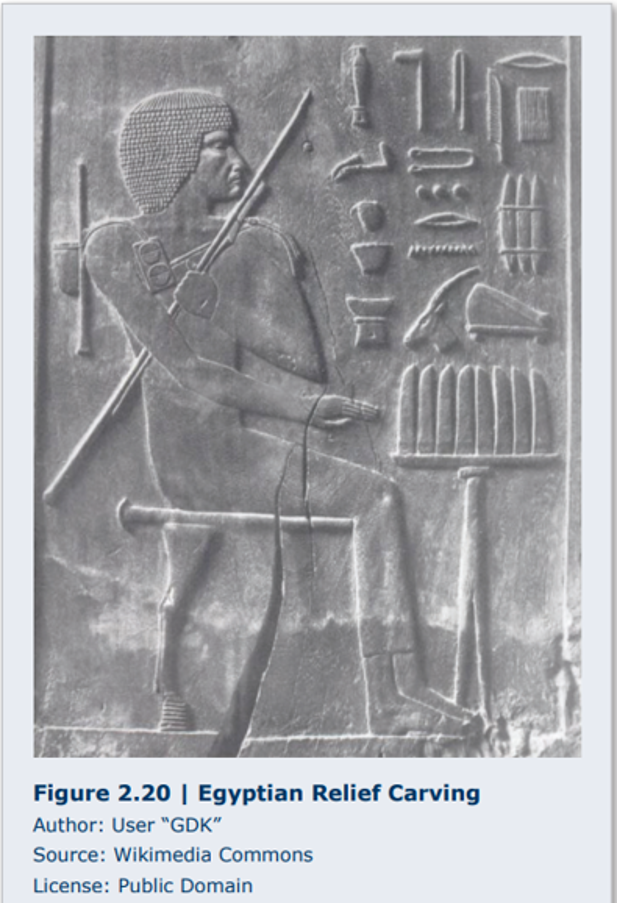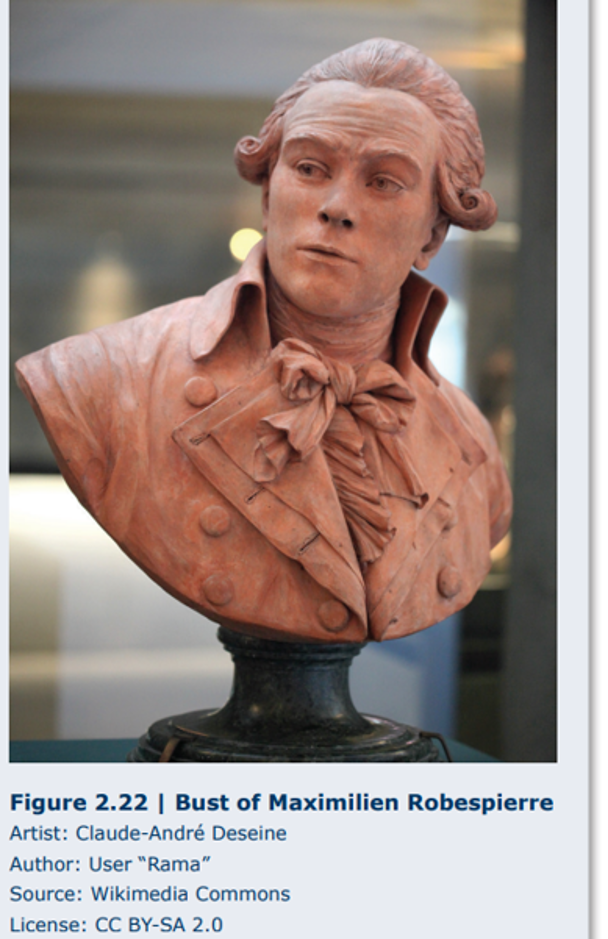Visual 1 (Hesy-Ra – Egyptian Relief Carving):

The “Relief of Hesy-Ra from his Mastaba” is an exciting piece of Egyptian art. It is a relief carving of Hesy-Ra sitting in front of an offering table. In 2011, this piece was made by the artist James Edward Quibell or a work based on his (Hesy-Ra,2011). The relief shows that ancient Egyptian beliefs in the future were still important and that people carefully prepared for their journey beyond. As the scene starts, Hesy-Ra is sitting in a significant spot, surrounded by gifts and items meant to keep him alive in the afterlife.
The artist successfully adds details like the scribal tools on Hesy-Ra’s body, emphasizing the person’s likely role in keeping records and recording information. This information gives the story more depth and suggests a link between the intellectual and spiritual worlds. The relief is more than just a picture of a person; it shows how people in ancient Egypt lived and worshipped. The use of stone, popular in Egyptian relief carvings, gives the piece a timeless quality.
An analysis of the artwork shows that the relief uses a unique Egyptian style marked by hieroglyphics and symbolic representations. The earthy and muted colour scheme typical of this art style gives off an air of seriousness and respect. The stylized shapes and clean lines add to the symbolic nature of the picture, drawing attention to the ritualistic parts of Hesy-Ra’s preparations for the future.
Colours, shapes, lines, and textures make the parts look good together. Earthy tones add to the ritualistic mood, and the stylized forms and fine lines make the symbols stand out more(Hesy-Ra,2011). The overall visual result is spiritual and culturally significant, making people think about ancient Egyptian society’s deep beliefs and practices.
In this interpretation, the relief of Hesy-Ra is more than just a work of art; it tells a story about the religion and culture of ancient Egypt. Above and beyond the realistic depictions of offerings and belongings, the art shows how essential proper burial rites and the journey to the afterlife were. When you look at the relief of Hesy-Ra, you can learn about the spiritual and symbolic sides of ancient Egyptian society.
The message by the artist that is part of the work is a celebration of how life goes on and how the dead are respected. In the broader sense, the relief makes people think about how everyone shares beliefs about the afterlife and practices connected to death. It makes you think about how faith, art, and the passing of time are connected.
Visual 2 (Maximilien Robespierre Bust – Claude-André Deseine):

The second piece of art is a terracotta bust of Maximilien Robespierre that was made in 1791 by Claude-André Deseine (Rama,2010). The bust at Chateau de Vizille is a moving picture of an important political figure during the French Revolution. The details of Robespierre’s face, including his blonde hair, are carefully carved to show his thinking. The choice of terracotta as the medium gives the bust a warm and natural tone that makes you think of the late 18th century.
The bust mostly shows Robespierre’s chest and head, and the look on his face stands out. Looking across, Robespierre’s eyes show he is thinking and maybe even having a magical view. Adding a bow tie or scarf to a picture of a historical figure gives them more personality and makes them seem more real.
By looking at the art parts, the bust shows the neoclassical style that was popular in the late 18th century. The drawing’s realistic and historically accurate look is helped by the fine lines that define the facial features. The smooth surface of the terracotta makes the art more enjoyable to touch and makes people want to respect the artist’s skill.
The colour scheme, primarily natural terracotta tones, goes with the earthy colours often found in neoclassical statues. Robespierre’s uniqueness is emphasized by the small details in the shapes and lines, and the overall design gives a sense of order and balance, which is typical of neoclassical art.
The bust of Maximilien Robespierre by Claude-André Deseine is a memorial that keeps alive a time in history when Robespierre was critical in the French Revolution(Rama,2010). The artist’s point is made by accurately portraying the subject, which includes a physical picture and a sense of the person’s personality and the period in which he lived.
Figuring out what the art piece means is more complicated than seeing a political figure. People who see it are asked to think about the ideas behind the French Revolution, the difficulties of being a politician, and the people who changed the course of history. The bust is now a piece of history, a physical reminder of a troubled time, and a picture of what people in revolutionary France wanted and the problems they faced.
Similarities and Connections:
Use of Colors and Medium: The colours used in both works of art are earthy, but the meanings and symbols differ. The soft colours in the Egyptian relief add to the feeling of a religious ceremony, while the natural clay tones in the Robespierre bust show that it is a real piece of history. The choice of stone for the relief and terracotta for the bust shows how people in those countries and times liked to make art.
Individual Representation: Both works of art show people Hesy-Ra and Maximilien Robespierre, but their roles and cultural settings are very different. Hesy-Ra stands for a person in ancient Egyptian views about the afterlife, which significantly emphasizes spiritual practices and rituals. The Robespierre bust, on the other hand, honours a politician and gives people a physical link to a critical time in French history.
Symbolism and Historical Context: The cultural and historical settings in which each piece of art was made are reflected in its symbols. The Egyptian relief shows a symbolic picture of the afterlife, which stresses spiritual beliefs and the idea that life goes on. The Robespierre bust, on the other hand, represents the ideas and complexities of the French Revolution. It shows a time in history when political ideas were changing.
Styles and Techniques of Art: The two works of art have different styles because they were made at different times and cultures. With its stylized shapes and hieroglyphics, the Egyptian relief follows the rules of ancient Egyptian art, focusing on spiritual and symbolic elements. The Robespierre bust, on the other hand, is in the neoclassical style, known for accurate portraits based on Greek and Roman art. How they used clean lines in the relief and detailed lines in the bust shows how artists worked at the time.
Religious and Cultural Reflection (Hesy-Ra): The Egyptian statue shows how people in ancient Egypt lived religious and cultural lives. It shows that people in that society have solid spiritual views and practices related to death and the afterlife. The story of Hesy-Ra is both a record of a person’s journey and a cultural artefact that shows how people in an ancient society thought and felt(Lofty,2022).
Political and Historical Commemoration (Robespierre): The Robespierre bust, on the other hand, is used to remember political and historical events. It captures a rough time in French history of revolutionary ideas and governmental chaos. The artist’s careful attention to detail lets the viewer connect with Robespierre’s humanity, going beyond political views and giving a glimpse into how hard it was to be a leader during a revolution (De Munain,2020).
Both works of art have worth in and of themselves but in different ways. The Egyptian relief is valuable because it is culturally and historically significant and shows how the people of ancient Egypt held their views. The Robespierre bust is vital as a piece of history because it shows how the French Revolution worked and its goals.
Communication of Ideas: Both works of art tell their own culture or historical stories well. The Egyptian relief shows the religious and symbolic sides of old Egyptian culture. The Robespierre bust, on the other hand, shows the political and historical background of the French Revolution.
Personal Evaluation: People may have positive opinions about the works of art because they like how well they are made, how important they are to culture or history, or how they tell valuable stories. Negative opinions might be based on personal tastes and interests, like not being interested in a specific period or culture.
Finally, comparing these two works of art, the Egyptian relief by Hesy-Ra and the Robespierre bust by Claude-André Deseine, shows how different art styles and techniques are and how much cultural and historical settings affect how art is made. Each piece of art, in its own way, makes people think about the complicated nature of life, whether it is through ancient rituals or political revolutions. This shows that art can communicate meaning across time and countries.
References
Hesy-Ra CG1426 c.jpg – Wikiversity. (2011, June 12). Commons.wikimedia.org. https://en.m.wikiversity.org/wiki/File:Hesy-Ra_CG1426_c.jpg
Rama. (2010, July 3). English: Maximilien Robespierre, bust by Claude-André Deseine. Terra cotta, 1791. Bought in 1986. It is displayed at Château de Vizille, accession number MRF 1986-243. Wikimedia Commons. https://commons.wikimedia.org/wiki/File:Robespierre_IMG_2299.jpg
Lotfy, N. (2022). History of dentistry in ancient Egypt. Advances in Medical, Pharmaceutical and Dental Research, 2(2), 36–41.
de Munain, G. L. (2020). The faces of disgust. Death masks of famous and infamous. On Disgust, 24(S1), 39-49.
 write
write